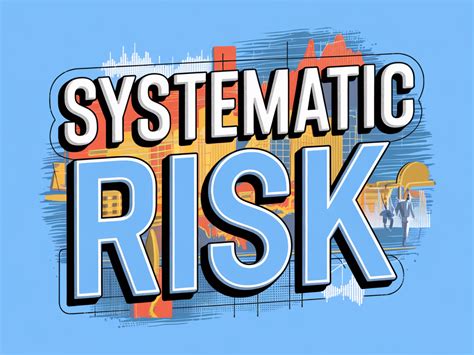Systematic risk in decentralized finances: understanding threats and alleviating measures
The growth of decentralized finances (Defi) has revolutionized people how to deal with their finances, but this also leads to significant risks. One of the more urgent concerns is the systemic risk, which can have large -scale consequences if they are not controlled.
What is a systemic risk?
The systemic risk refers to the potential of the financial collapse of the system, which is caused by a combination of factors such as market failures, regulatory weaknesses, or complex interactions between different components of the system. In the context of defi, the systemic risk comes from the value concentration of value, such as cryptocurrencies, as well as the lack of observation and regulation.
Risks in decentralized finances
- Liquidity Crisis : Loss of sudden confidence on a particular Defi platform can lead to a liquidity crisis, where investors rush to withdraw their money, decrease prices and a potentially withdrawal cascade.
- The risk of infection : The spread of instability from one device to another can create a self -enhanced cycle, which results in a systematic risk that is difficult to control.
- Regulatory uncertainty

: Changes in regulatory policies or lack of clear guidelines can cause uncertainty and instability in the Defi markets.
- Market Manipulation : Sophisticated players can try to manipulate price movements by distributing false information or creating artificial market conditions.
The role of cryptocurrencies
Cryptocurrencies such as Bitcoin and Ethereum have become a focus point for many defi applications due to their many decentralized nature and lack of governmental control. However, this also increases the risk of systemic instability:
- Voatity : The price movement of cryptocurrencies can be very volatile and thus become vulnerable to sudden changes in investors.
- Regulatory uncertainty : Governments do not always provide clear guidelines or regulations to the use of cryptocurrencies, leading to the market uncertainty and potential volatility.
Starization measures
To alleviate the systemic risk of defi, it is essential to apply a layer approach:
- Diversification : Distribution of investments between various asset classes such as traditional titles, cryptocurrencies and Stablekines to reduce the risk of concentration.
- Regulatory compliance : Make sure that the Defi platforms are in line with the relevant requirements and guidelines, with particular regard to basic securities and products.
- Liquidity Management : Complete effective liquidity management strategies such as market overlap, coverage and manufacture to alleviate the impact of liquidity crises.
- Stress Test : Do a regular stress test on the Defi platform to identify vulnerabilities and develop mitigation strategies.
Conclusion
Systemic risk is an important concern in decentralized financing, especially in cryptocurrencies. By understanding the risks and adopting mitigating measures, investors can reduce exposure to possible instability and ensure the protection of their assets.
While the Defi ecosystem continues to grow and develop, it is essential for regulators and market players to work together to develop clear guidelines and regulations that deal with systemic risk. By accepting just one layer approach, we can create a more flexible and sustainable defi environment to deal with these risks.
Recommendations
- Education for investors : Provide specific information to investors on the risks related to investing cryptocurrencies.
- Regulatory Guide : Elaboration of clear guidelines for Defi platforms, including regulatory compliance and liquidity requirements.
3 and 3.
